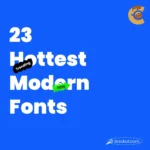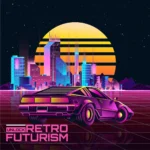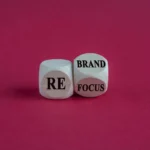The cosmetic industry is evolving not only in product innovation but also in how brands present themselves through packaging. Packaging is no longer just a container; it has become an essential tool for storytelling, sustainability, and building an emotional connection with consumers.
In this article, I will explore the most transformative packaging trends for 2025, providing in-depth insights and actionable ideas for brands of all sizes.
Consider the case of Glossier, a brand that emerged as a disruptor in the beauty space. With its sleek, millennial-focused aesthetic, Glossier’s packaging became a social media sensation. From its pastel pink bubble wrap pouch to its minimalist design, every aspect feels intentional. It wasn’t just about the product—it was about creating an unboxing experience that aligned with their core values of accessibility, simplicity, and self-expression.
This approach shows how packaging can move beyond its primary purpose and become a central element of a brand’s identity. With trends rapidly evolving, let’s look at how brands can embrace the future of cosmetic packaging in 2025.
1. Sustainability as a Core Principle
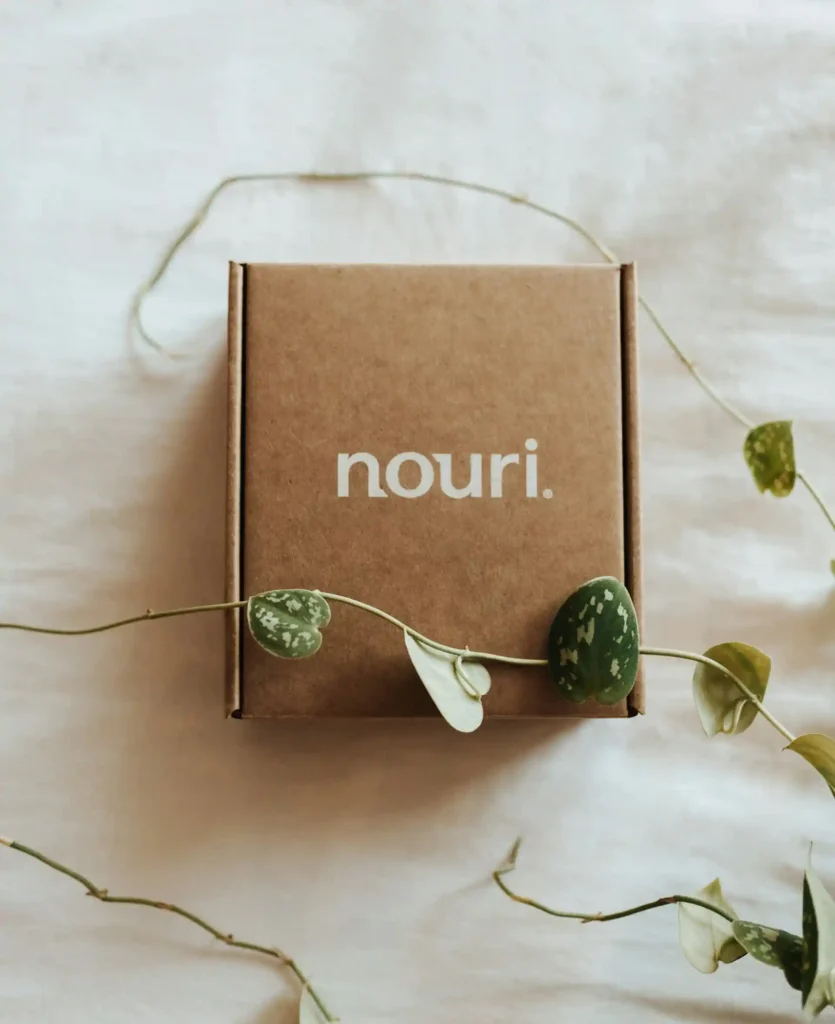
Sustainability is no longer an afterthought—it’s a necessity. Consumers are increasingly conscious of their environmental impact, and they expect brands to share this responsibility.
Deep Dive into Sustainability
Sustainable packaging involves materials, design and processes that minimise harm to the ecosystem. Brands are moving from traditional plastics to newer options such as bioplastics made from corn starch or sugar cane, mycelium-based packaging and recycled paperboard.
However, sustainability goes beyond materials. It’s about adopting a circular economy model, where packaging is designed to be reused, recycled or composted without creating waste. For example, The Body Shop has introduced a return scheme where customers can bring back empty containers so they can be cleaned, refilled and reused
Challenges and Actionable Solutions
- Cost: Sustainable materials can be expensive. Smaller brands can start with a phased approach, incorporating eco-friendly options into limited product lines and then moving forward.
- Education: Communicate sustainability efforts through labels and digital platforms. For example, a QR code on packaging can educate consumers about recycling instructions.
- Innovation: Invest in lightweight materials that reduce shipping emissions while maintaining durability.
For example, Lush uses “naked packaging” for some of its products, eliminating the need for containers. Small businesses can copy this using paper wrappers or reusable cartons for products such as soaps or balms.
2. Refillable and Reusable Packaging
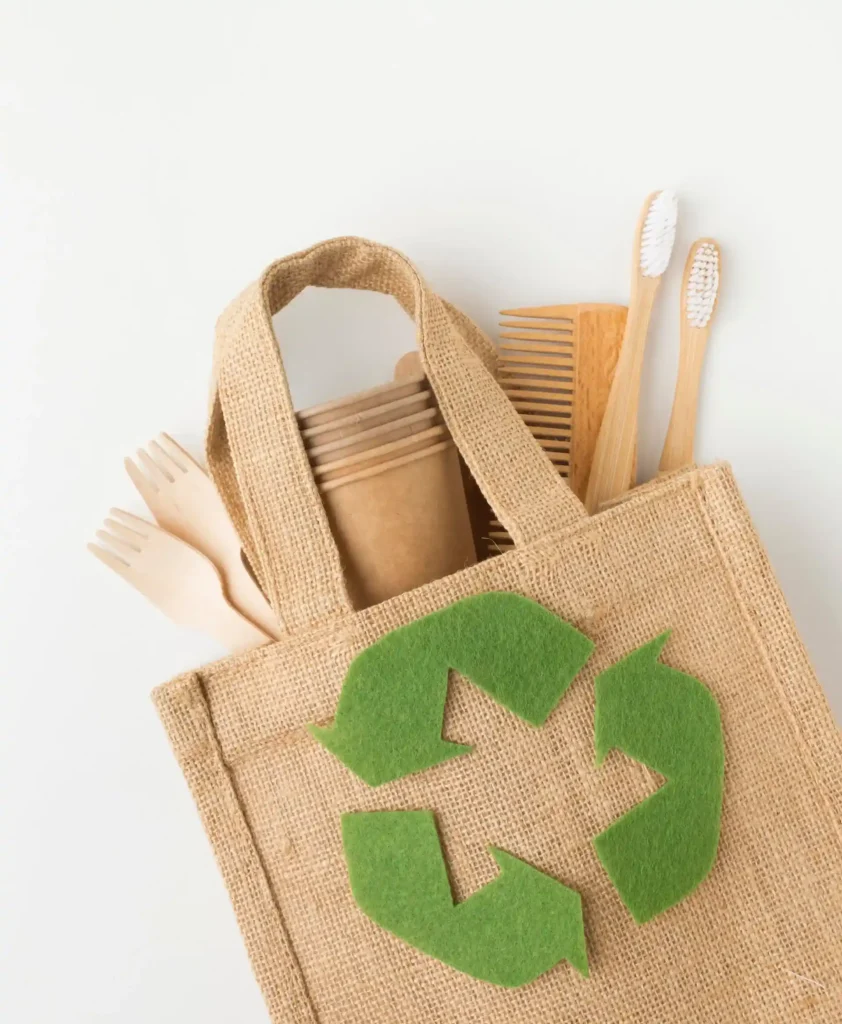
The refillable packaging is reshaping the beauty industry by providing both environmental and financial benefits. This trend strengthens customer loyalty while reducing single-use packaging.
The Rise of Refill Systems
Refillable packaging typically involves two components: a durable container (e.g., glass, aluminum, or heavy-duty plastic) and a lightweight refill (e.g., a pouch or capsule). This model is eco-friendly and aligns with the consumer’s desire for cost-effective solutions.
For example, Dior’s refillable lipstick cases and Kjaer Weis’s refillable compacts showcase how high-end brands maintain luxury aesthetics while adopting sustainability.
How Any Brand Can Leverage Refillable Packaging
- Durability and Aesthetics: Use materials like aluminium or high-quality glass that look premium and last longer.
- Refill Formats: Offer versatile refills—pump cartridges, pouches, or pods—that are lightweight and easy to handle.
- Marketing the Benefits: Emphasize cost savings and the environmental impact of reusing containers. Include data points, like the amount of plastic saved, to make the benefits tangible.
Refillable systems can also double as a branding opportunity. Consider how Chanel uses elegantly designed perfume bottles that customers refill at dedicated stations. Even smaller brands can create refillable beauty stations in stores or collaborate with local retailers.
3. Smart Packaging: Where Technology Meets Beauty
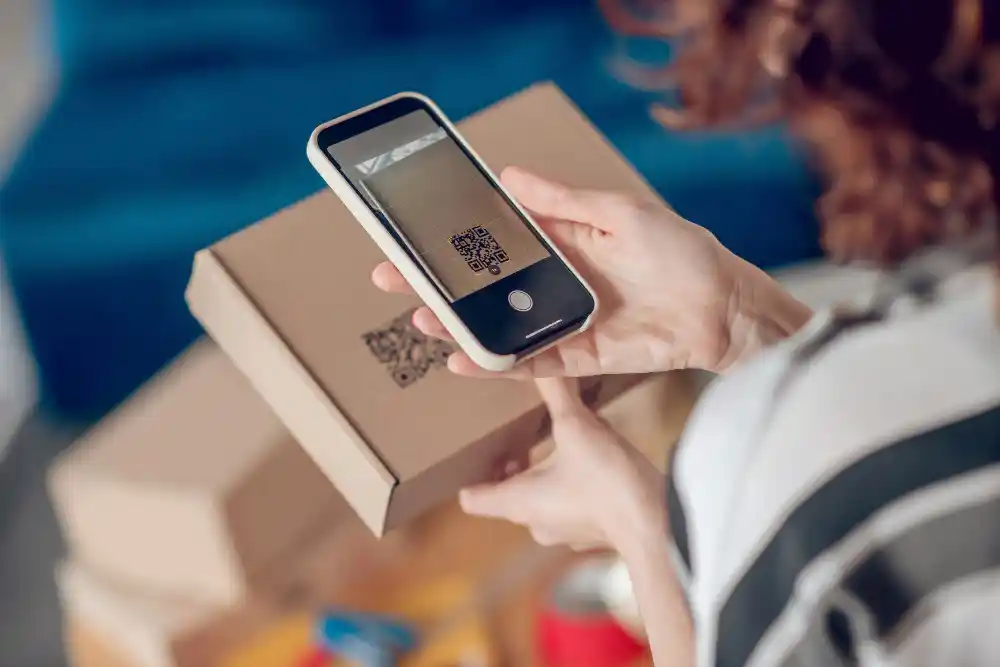
Smart packaging is transforming cosmetic branding into a digital-first experience, enabling brands to interact with consumers in real-time.
What Makes Packaging Smart?
Smart packaging integrates technology such as QR codes, AR features or NFC chips into the design. This functionality improves the customer experience, providing instant access to tutorials, ingredient sourcing or product recommendations. For example, a QR code on a skincare product could link to a video explaining its benefits or usage.
Beyond marketing, smart packaging is also key to avoiding faking and ensuring product authenticity. For example, L’Oréal’s blockchain-based solution allows customers to trace their product’s journey from manufacturing to store shelves.
Actionable Insights for Brands
- Engagement Tools: Use AR to create virtual try-ons for products like lipsticks or foundations.
- Transparency: Offer ingredient breakdowns and ethical sourcing information through QR code scans.
- Loyalty Programs: Embed NFC chips that track customer purchases, rewarding them for sustainable actions like recycling packaging.
While brands like Estée Lauder leverage AR for luxury experiences, even small brands can adopt QR codes linked to simple tutorials or loyalty campaigns, making the technology accessible.
4. Minimalism: Elegance in Simplicity
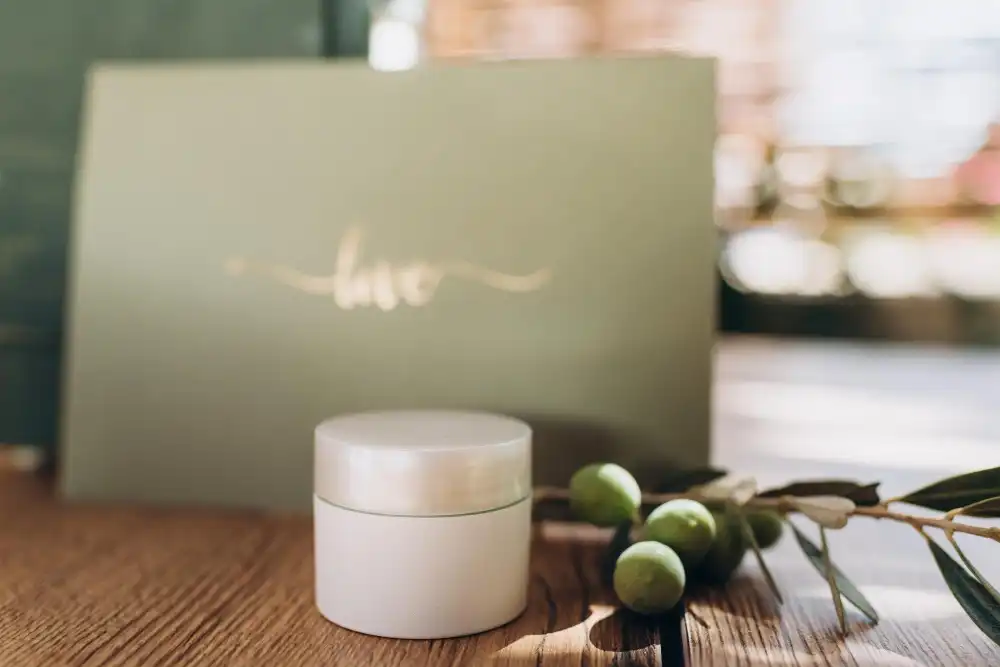
Minimalism continues to dominate packaging design, offering a clean, modern aesthetic that appeals to today’s consumers.
Why Minimalism Works
Minimalist packaging creates a sense of sophistication while giving the product a chance to speak for itself. It often relies on high-quality materials, neutral color palettes, and simple typography to convey elegance. This trend also aligns with sustainability, as it typically involves fewer materials and less waste.
How to Implement Minimalism
- Design Consistency: Use consistent colors and fonts across your product line. A skincare brand can adopt a monochromatic design with subtle embossing for a premium look.
- Eco-friendly Touches: Combine minimalist designs with eco-conscious choices, like soy-based inks or FSC-certified paper.
- Product-Centric Approach: Avoid overloading the packaging with text. Let the product shine through—consider clear or frosted containers for liquid products.
Aesop exemplifies minimalism through amber bottles and monochrome labels. Smaller brands can also achieve similar sophistication by focusing on well-structured, streamlined designs.
5. Inclusive Packaging: Reaching All Audiences
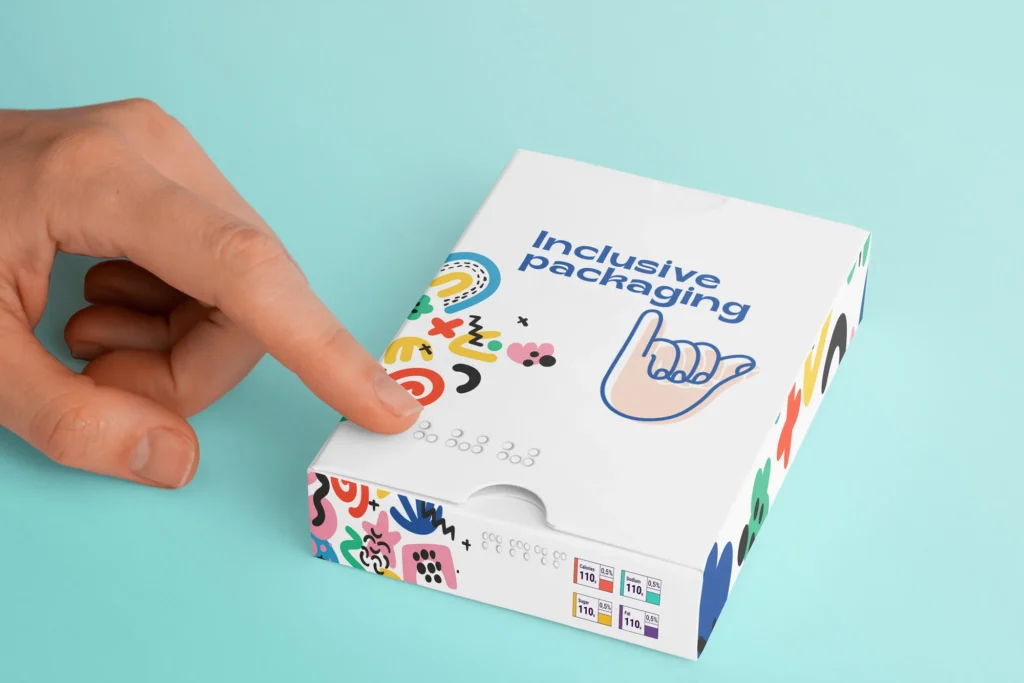
Inclusive packaging is about creating designs that cater to diverse audiences, considering factors like gender, ability, and culture.
What Makes Packaging Inclusive?
- Gender Neutrality: Stay away from overly feminine or masculine designs. Neutral colors and clean lines can make products more universally appealing.
- Accessibility Features: Incorporate Braille labels, ergonomic designs and easy-to-open caps for the convenience of consumers with disabilities.
- Cultural Relevance: Avoid cultural appropriation by researching symbols or design elements used in branding.
Brands like Fenty Beauty emphasize inclusivity not only in their product range but also in their packaging, which avoids traditional gender cues. Even indie brands can implement inclusivity by gathering customer feedback and testing designs with diverse focus groups.
6. Personalization: Making Packaging a Statement
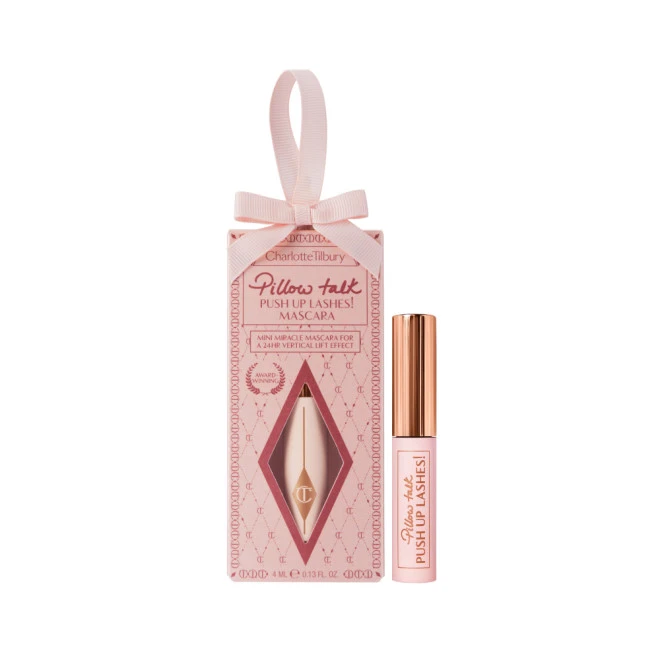
Personalisation has gone from being a luxury feature to a consumer expectation. Customised packaging helps brands build a unique connection with customers.
How Personalization Impacts Branding
- Emotional Connection: Adding names or custom messages to packaging makes customers feel valued.
- Seasonal Campaigns: Create limited-edition designs for holidays or events, offering personalized touches for gifts.
- Digital Tools: Enable customers to personalize orders through online platforms.
Brands like Charlotte Tilbury offer engraving services on select products. Smaller companies can achieve this with digital printing solutions or localized personalization campaigns.
7. Biodegradable and Compostable Packaging: Closing the Sustainability Loop
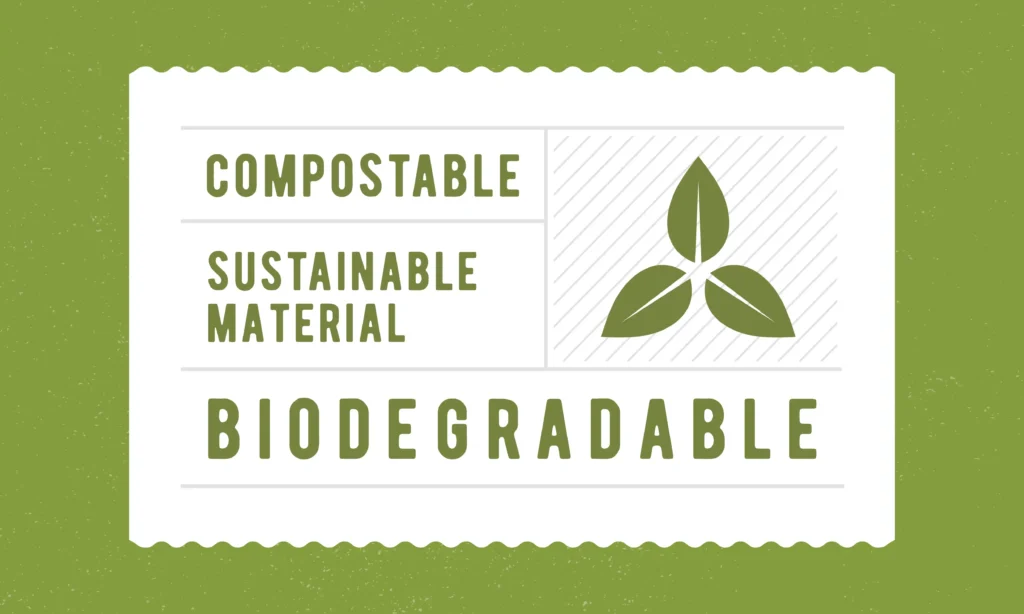
As consumers are becoming more environmentally conscious, biodegradable and compostable packaging is becoming popular as the ultimate solution to environmental concerns. These materials naturally decompose into organic substances, leaving no toxic residue.
What Sets These Materials Apart?
Unlike traditional recyclables, biodegradable packaging does not require special facilities to be reused. Materials such as PLA (polylactic acid), mushroom-based packaging, and water-soluble films are leading innovations. For example, Seed Phytonutrients, a beauty brand, uses compostable paper bottles for its hair care line.
Not all biodegradable options are the same, however. Some materials only decompose under specific conditions (such as industrial composting), making it important for brands to educate consumers about disposal methods.
Implementing Biodegradable Packaging
- Material Sourcing: Partner with suppliers who specialize in naturally decomposing organic materials.
- Consumer Education: Add instructional guides on packaging, such as icons or QR codes, that explain how to compost or dispose of the product responsibly.
- Lifecycle Impact: Conduct lifecycle assessments to ensure biodegradable materials are genuinely eco-friendly compared to traditional options.
Small brands can adopt this trend affordably by incorporating compostable labels or biodegradable protective wraps.
8. Packaging Designed for E-Commerce: Safe and Stylish
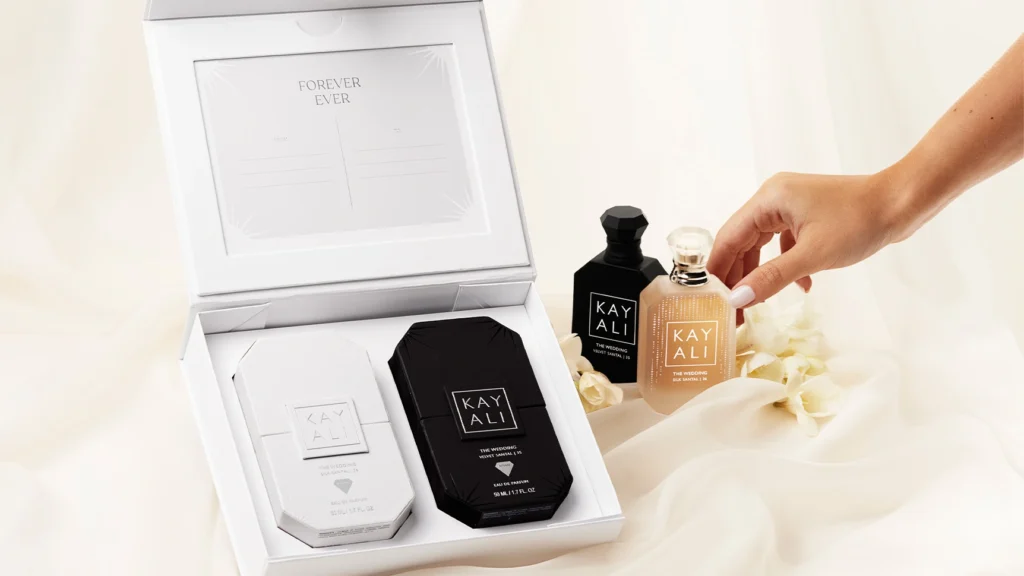
With the growing trend of online shopping, packaging now has to meet the needs of e-commerce. Products have to withstand shipping while maintaining an appealing unboxing experience.
Key Considerations for E-Commerce Packaging
- Durability: Use materials that protect against transit damage, such as corrugated cardboard or air cushions.
- Lightweight Design: Reduce shipping costs by choosing lightweight materials like paperboard or thin bioplastics.
- Unboxing Experience: Create visually appealing interiors with branded tissue paper, inserts, or thank-you cards.
For example, Huda Beauty uses sturdy outer boxes for protection while incorporating elegant internal designs that reflect their brand identity. Even startups can elevate the customer experience by using cost-effective custom stickers or branded tape.
9. Multifunctional Packaging: Beyond Containment
Multifunctional packaging combines practicality with value, providing secondary uses beyond its primary role. This trend resonates with consumers who appreciate products that add convenience or fun to their lives.
Examples of Multifunctional Designs
- Transformative Containers: Some brands offer packaging that doubles as storage or display cases. For example, a makeup kit box that turns into a vanity organizer.
- Interactive Features: Include reusable mirrors or applicators integrated into the packaging.
- Sustainability through Reuse: Encourage consumers to repurpose packaging into plant holders or DIY projects.
Brands like Too Faced have embraced this trend by incorporating compact mirrors and refillable designs into their palettes. Smaller companies can offer unique twists, such as packaging that folds into a gift box or wall art.
10. Bold Typography and Graphics: Making a Statement
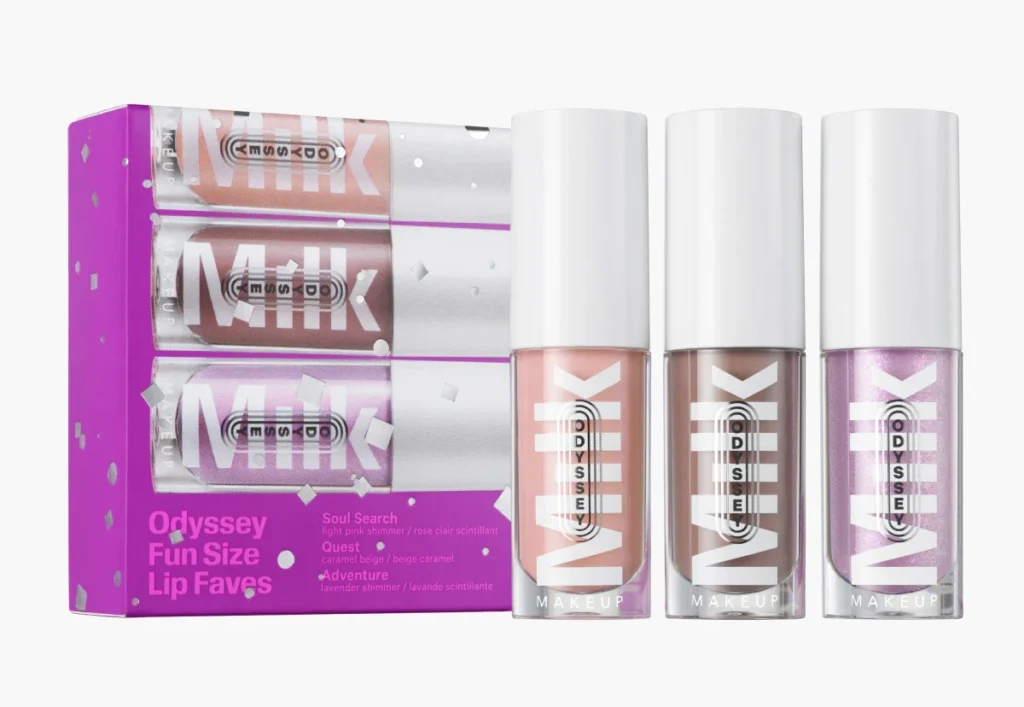
In a crowded market, bold typography and eye-catching graphics help brands stand out. This trend focuses on the use of typography as the focal point of the design, paired with vibrant colors or artistic elements.
Why Typography Matters
Typography conveys mood and personality, from clean sans-serif fonts that signal modernity to artistic hand-lettering that evokes creativity. Packaging with oversized fonts and bold contrast draws attention to crowded shelves.
Tips for Bold Packaging Designs
- Experiment with Color: Pair bold typography with contrasting hues for maximum impact.
- Brand Storytelling: Use text to highlight key values or benefits, such as “Vegan Formula” or “100% Recycled.”
- Graphic Cohesion: Ensure typography aligns with other design elements, like icons or imagery.
Milk Makeup demonstrates this trend, using minimal yet bold text that highlights its clean, cruelty-free branding. For emerging brands, leveraging accessible tools like Canva can help create high-impact designs at a low cost.
11. Collaboration with Tech Companies: Innovating Through Partnerships
The confluence of beauty and technology is creating groundbreaking opportunities for cosmetic brands to redefine their packaging. By collaborating with tech companies, brands are integrating advanced functionalities into their products, improving both usability and customer experience.
How Tech Partnerships Elevate Packaging
- Smart Packaging for Data Insights
Tech-enabled packaging can track product usage or provide real-time information about ingredients. By integrating RFID chips, brands can offer inventory updates to retailers or create loyalty programs that reward customers for refilling products. - Eco-Innovation Through AI
Partnerships with tech companies specializing in AI have allowed brands to optimize material use and design packaging with minimal environmental impact. AI-powered tools can simulate how a product will look and perform, reducing waste incurred during the prototyping process. - Interactive Experiences for Consumers
Companies like Shiseido are experimenting with packaging that includes digital screens to deliver customized messages, product details, or skincare diagnostics. Even smaller brands can leverage affordable tech integrations like NFC stickers to provide a unique customer experience.
Why These Collaborations Matter
These partnerships elevate brand innovation and build stronger relationships with tech-savvy consumers who value interactivity and functionality. They also help brands stay ahead in a competitive market by providing practical and exciting solutions.
By embracing technology, brands establish themselves as forward-thinking leaders, able to deliver cutting-edge experiences while meeting modern consumer needs. This trend is expected to grow as advancements in AI, IoT, and AR continue to shape the packaging industry.
Where to Download Cosmetic Packaging Templates?
- Canva – A beginner-friendly platform with free and premium templates for labels, boxes, and cosmetic pouches. Perfect for quick customizations.
Visit Canva - Creative Market – Offers premium, print-ready templates and mockups for professional-grade cosmetic packaging.
Explore Creative Market - Envato Elements – Features an extensive library of editable packaging templates, including luxury designs and e-commerce-ready files.
Check Envato Elements - GraphicRiver – Provides affordable, single-use packaging templates ideal for small projects or startups.
Visit GraphicRiver
Conclusion: Preparing for the Future of Cosmetic Packaging
Cosmetic packaging in 2025 isn’t just about holding products – it’s about telling stories, building trust and meeting consumer demands for sustainability, inclusivity and innovation. From refillable systems to bold designs and biodegradable solutions, these trends offer brands of all sizes opportunities to redefine their identity.
As we’ve seen, even the smallest changes can have a significant impact. Whether you’re adopting a refillable system or exploring smart packaging, the important thing is to align your strategy with your brand values and your audience’s expectations.
Embrace these trends to not only keep up with the industry but to become a leader in setting new standards for beauty packaging.


